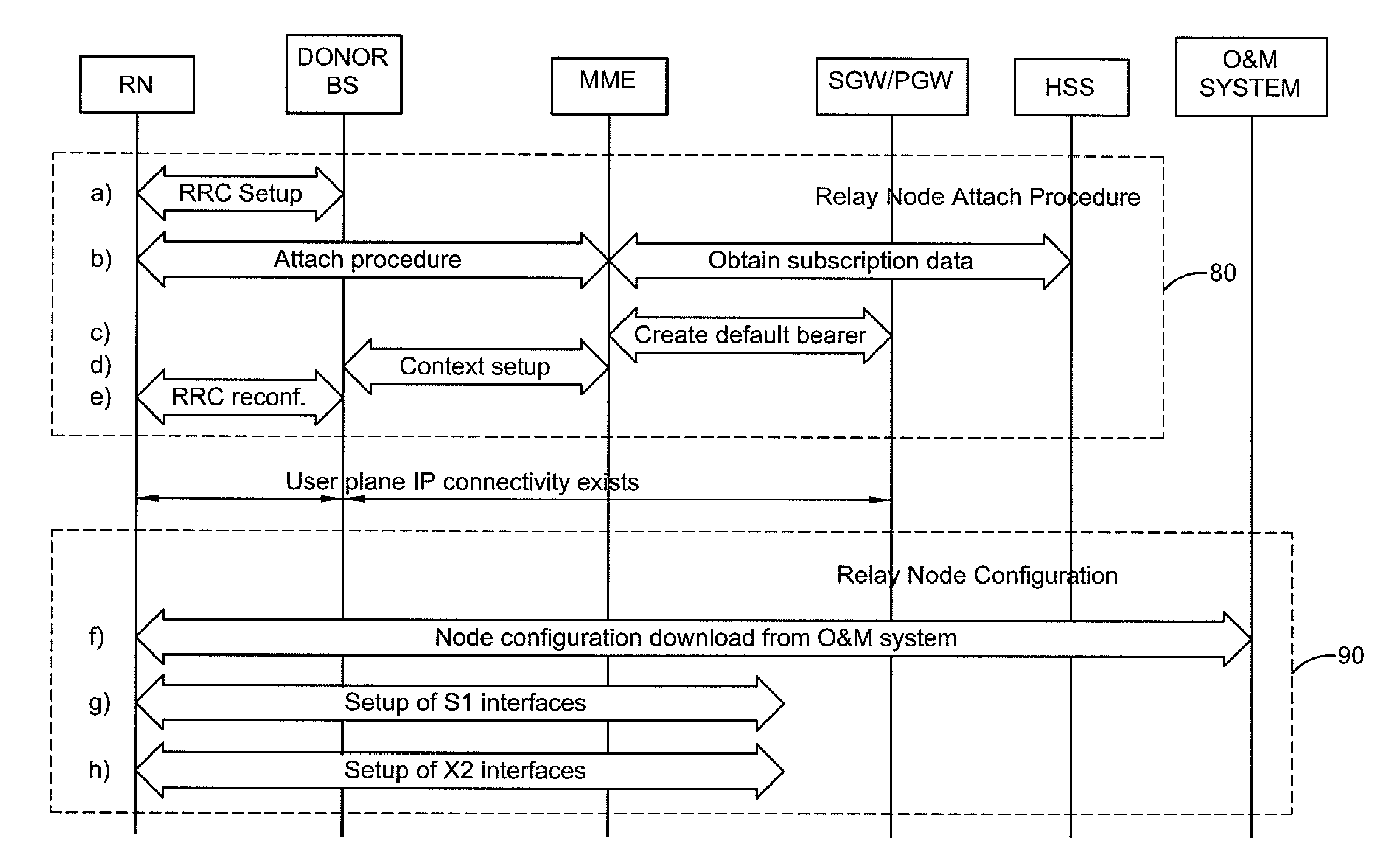Identification of Relay Nodes in a Communication Network
- Summary
- Abstract
- Description
- Claims
- Application Information
AI Technical Summary
Benefits of technology
Problems solved by technology
Method used
Image
Examples
Embodiment Construction
[0026]Referring now to the drawings, FIG. 1 illustrates an exemplary communication network 10 according to one exemplary embodiment of the present invention. For illustrative purposes, the present invention is described in the context of a Long Term Evolution (LTE) network. However, the principles described herein may also be applied to networks based on other communication standards now known or later developed.
[0027]At the highest level, the communication network 10 comprises the core network 20 and the radio access network 40. The core network 20 is responsible for the overall control of the user terminal (not shown) and the establishment of bearers between the user terminal (called user equipment in the LTE standard) and external networks, such as the Internet or other packet data networks (PDNs). The main logical components of the core network 20 comprise the Packet Data Network Gateway (PDN-GW) 22, the Serving Gateway (SGW) 24, the Mobility Management Entity (MME) 26, and the ...
PUM
 Login to View More
Login to View More Abstract
Description
Claims
Application Information
 Login to View More
Login to View More - R&D
- Intellectual Property
- Life Sciences
- Materials
- Tech Scout
- Unparalleled Data Quality
- Higher Quality Content
- 60% Fewer Hallucinations
Browse by: Latest US Patents, China's latest patents, Technical Efficacy Thesaurus, Application Domain, Technology Topic, Popular Technical Reports.
© 2025 PatSnap. All rights reserved.Legal|Privacy policy|Modern Slavery Act Transparency Statement|Sitemap|About US| Contact US: help@patsnap.com



